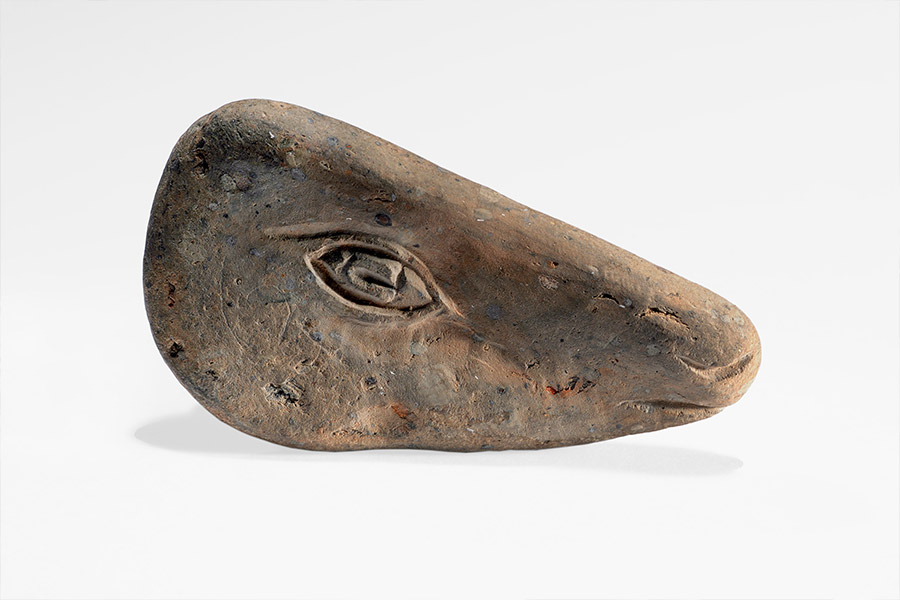Picasso and prehistory.
The Venus of Lespugue was discovered in August 1922 in Lespugue, in the Rideaux cave located in the gorges of the river Save, in the Haute-Garonne region. It was found at the back of a prehistoric dwelling and given the name "Venus" attributed to sculpted female figurines. Its diamond-shaped form attests to a symbolic purpose and a carefully crafted execution. Picasso purchased two casts of this striking Venus, probably in the late 1920s.
At the beginning of the 20th century, prehistoric discoveries fascinated the public, and particularly avant-garde artists, captivated by a scarcely-known period in art history that had curiously been neglected until then, yet included very surprising pieces. Picasso was part of this trend. We know him to have always shown a keen interest in different art forms, those "primitive arts" from multiple sources and periods. Clearly, he was not indifferent to the discovery of this Venus. Beginning in the summer of 1927, his abundant production included drawings, paintings, and sculptures that renewed the representation of female bodies. He produced smooth, bulging volumes, almost ignoring the face, finding inspiration in these both powerful and gentle forms which he made his own. Woman Throwing a Stone, painted in 1931 and on view in the first section of the exhibition, is emblematic of both his approach and of his quest at the time.
in the exhibition devoted to Picasso and prehistory at the Musée de l'Homme, a second section, "Bestiaire et grands décors," gathers a series of Picasso's animals and creatures whose forms and positions are echoed by the artist's flowing line, much as in the groups of animals painted on the walls of prehistoric sites in Spain and France. Picasso loved animals, and always enjoyed depicting them. Therefore, it is hardly surprising that he was tempted by this phantasmagorical fauna, drawn by the force and the surreal power of these creatures from another era.
The section titled "Empreintes et abstractions" offers a clear, educational presentation of the emergence of visual references to prehistory in the artist's work. Abstract signs carved in stone engage in dialogue with his drawings, as his (sugar lift) handprint on a copper plate does with those decorating the ceilings in the caves of Altamira or of Pech Merle. That handprint, becoming both the subject and the motif, suggests that the artist associated it with a creative act, in the wake of the early humans.
A fourth section, "Objets trouvés," explores the way Picasso viewed, collected, and transformed the natural objects that he picked up or unearthed on his walks. Transformed, painted, or engraved for aesthetic or functional purposes, they echoed the animal and mineral materials used by the earliest artists.
In the fifth and last section of the exhibition, featuring "primitive goddesses," a collection of casts of prehistoric Venuses are placed in dialogue with Picasso's sculptures, which include The Venus of Gas, assembled in 1945 from a gas burner set upright and humorously qualified by the artist as a "goddess of modern times."
The exhibition Picasso and Prehistory, on view from February 8 to June 12, 2023, has been conceived and developed by the Musée de l’Homme, belonging to the Muséum national d’Histoire naturelle, as part of the Picasso Celebration 1973-2023.





 Summary
Summary